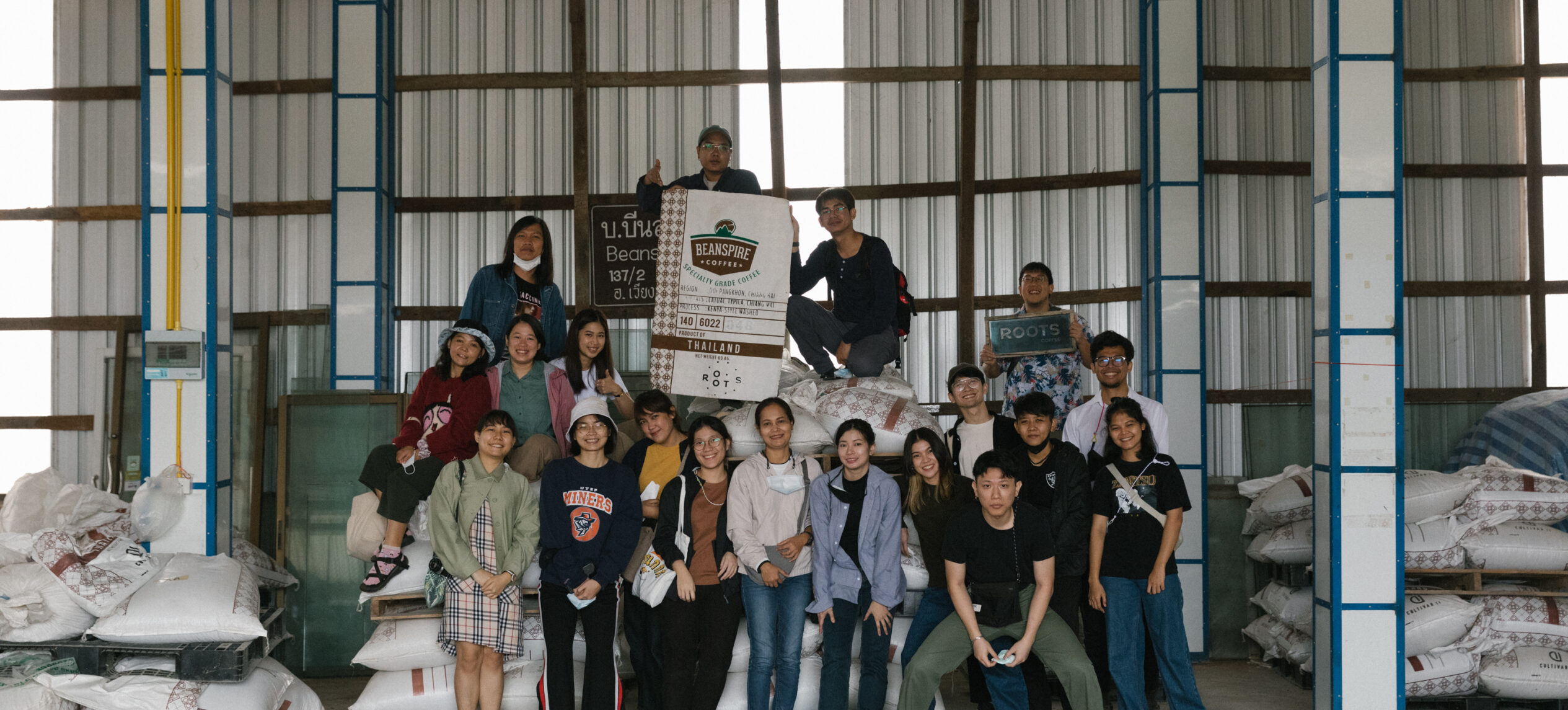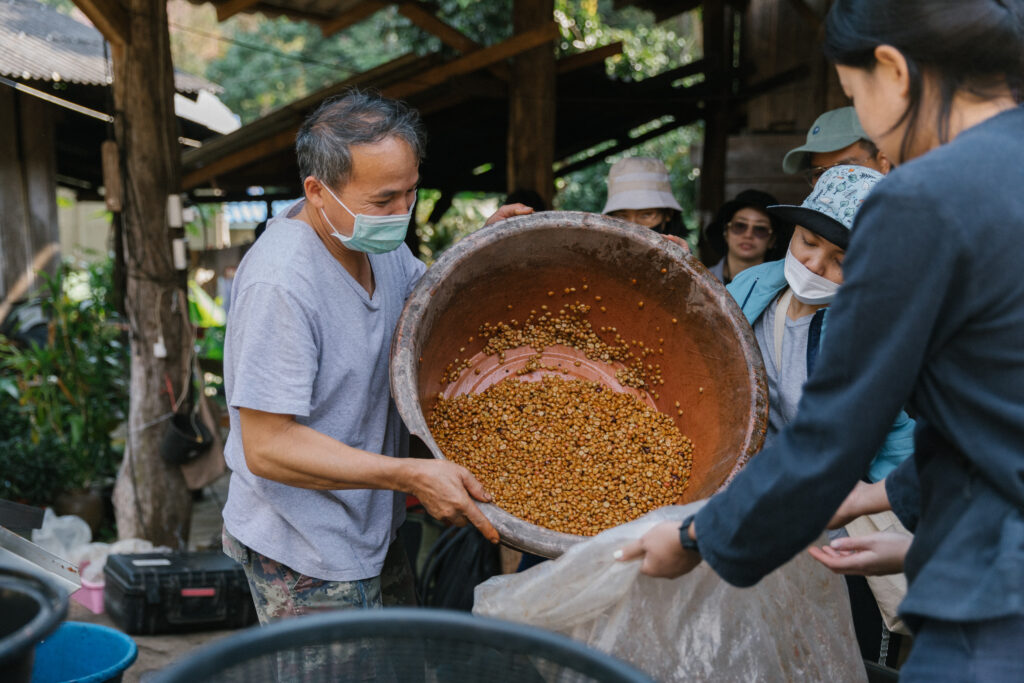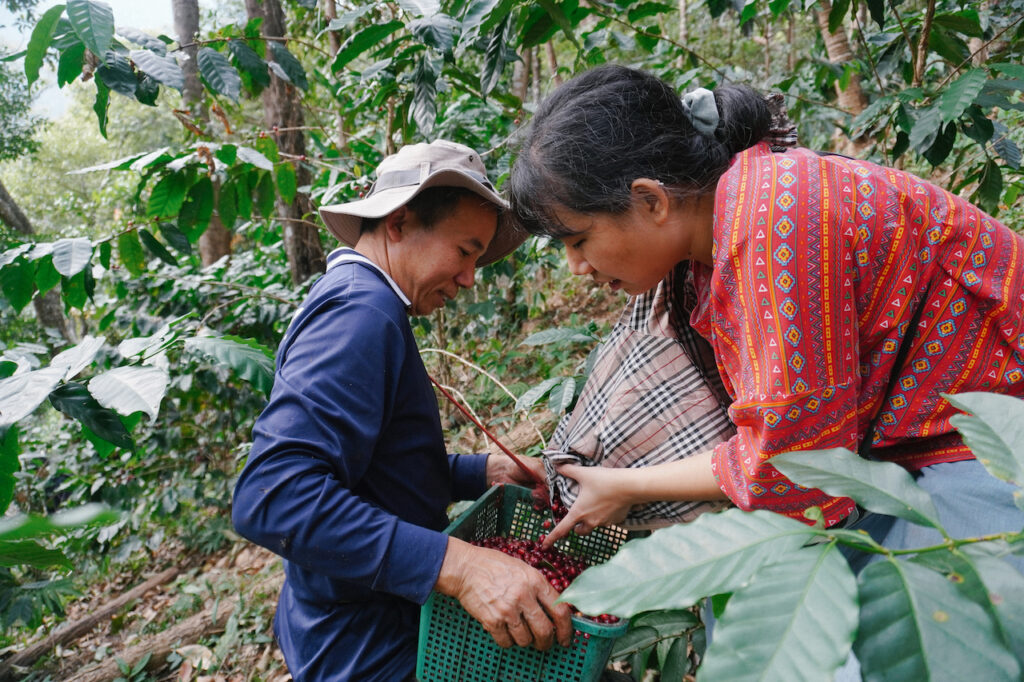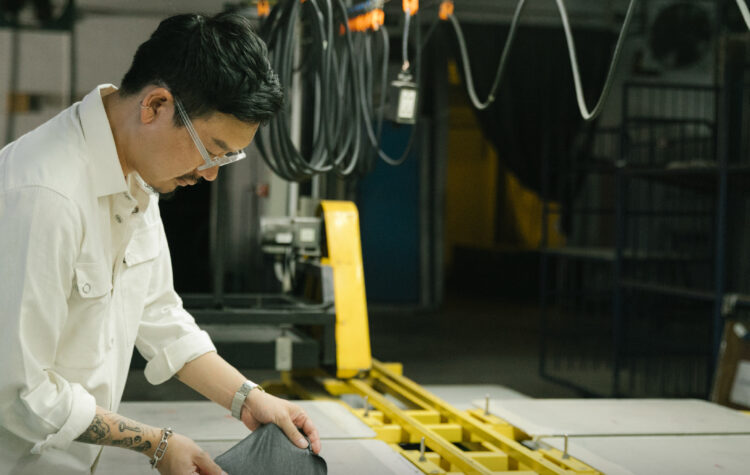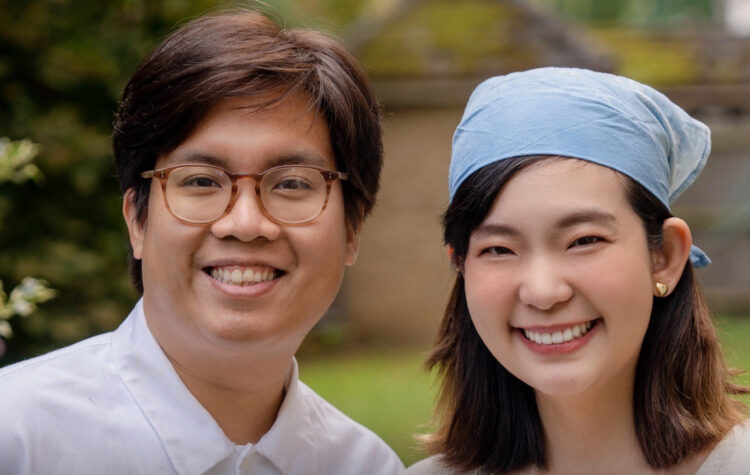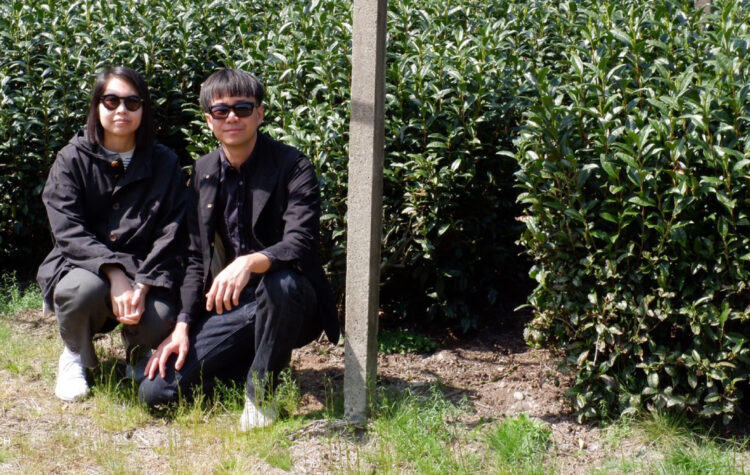For Roots, the Origin Trip is one of the hearts of our coffee business.
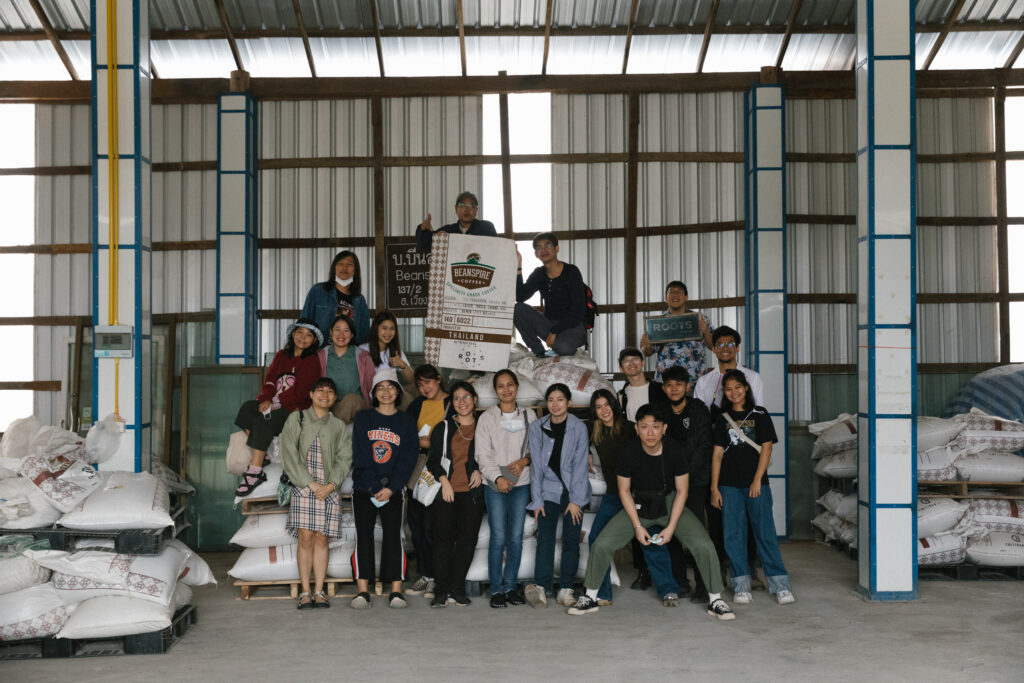
The Roots Origin Trip is an annual trip that usually takes place during the coffee harvesting season, from approximately December to February. The purpose of this trip isn’t simply to say hello to the farmers we work with. It’s to educate and immerse our Roots Baristas in the behind-the-scenes coffee growing process, so they can feel the intention and passion of the local farmers who produce the coffee beans they brew.
Due to the COVID-19 pandemic, the Roots Team could not organize an Origin Trip to the coffee plantations for two years. Let’s hear what the trip organizers, Tae (Komsan Saetang) the Head Barista, and Nu (Anuwat Nobnop) a Barista at Roots BITEC, have to say about the most recent Origin Trip they had the opportunity to go on and all the fun and exciting things they experienced with the local farmers.
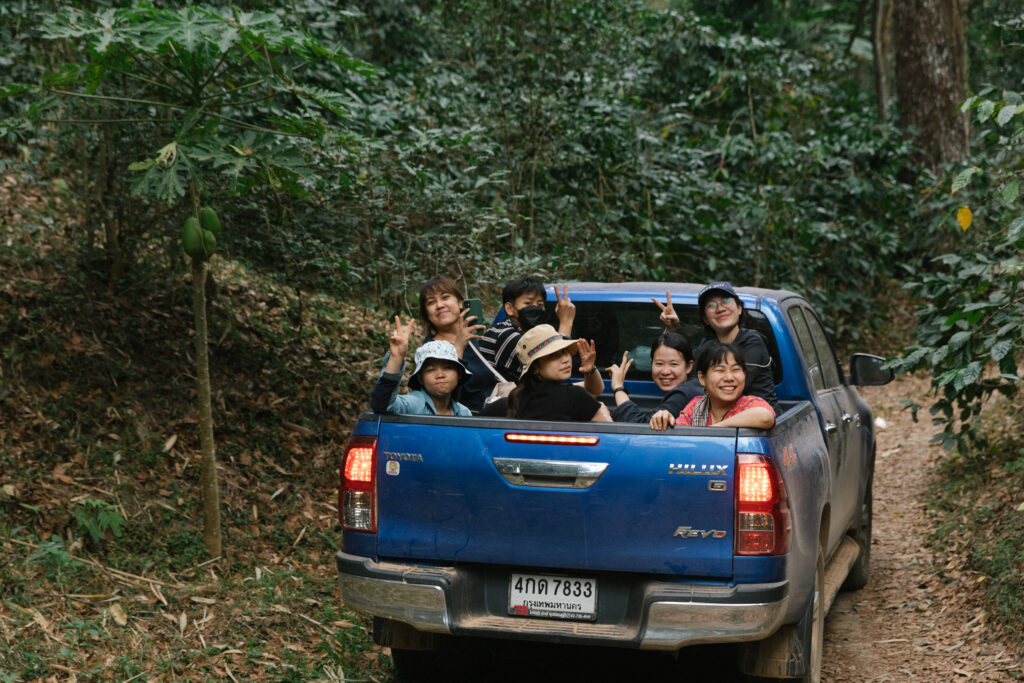
“The Origin Trip is about bringing our Baristas to the coffee’s origins for them to understand the step-by-step journey of the coffee beans before it reaches the roastery. By returning to the coffee’s origins, they immerse themselves in the lifestyle of coffee farmers and explore the terrains and local climate. They learn why coffee farmers grow a specific varietal, why they choose to process the beans in a particular method, and why Roots has so many goals.”
Tae adds that each Origin Trip has a different itinerary. For new Baristas, their trips will bring them along to plantations that are easier to travel to and processing plants with processing methods that are not overly complicated. For seasoned Baristas who have been on trips before, it will be a trip heavily focused on content that will be more fun and challenging. With both these trips, the local farmers are always willing to share their stories and are lovely “teachers” to our Baristas.
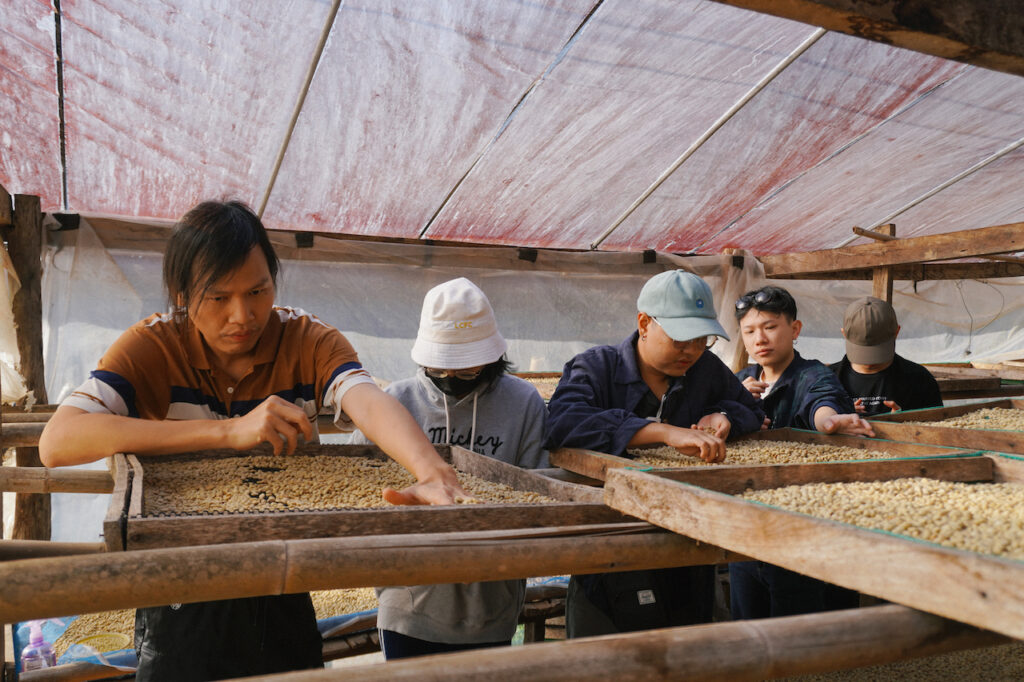
“My personal belief is if we just recite coffee theories without actually seeing it in action, you might not understand it. When you do understand it though, it’s incredibly beneficial for our Baristas and their knowledge of coffee. Another goal of the trip is a connection through encouragement. By visiting the farmers, engaging in conversations, listening to their problems, or even just bringing some coffee from Bangkok to share with them, it encourages the farmers to make better coffee, and our relationship with them also improves,” explains Tae.
The first coffee plantation that Tae, the Head Barista, brings the new Baristas to is P’ Nui and P’ Aoy’s plantation in Doi Saket, Chiang Mai.
“Mainly, P’ Nui and P’ Aoy brought us around to explore the coffee plantation and collect coffee beans. Before I went, my image of a coffee plantation was of a plain where trees are beautifully arranged, well-kept, easy to collect the coffee cherries from, with coffee cherries all ripe at around the same time. When I saw it in reality, it was completely different.“
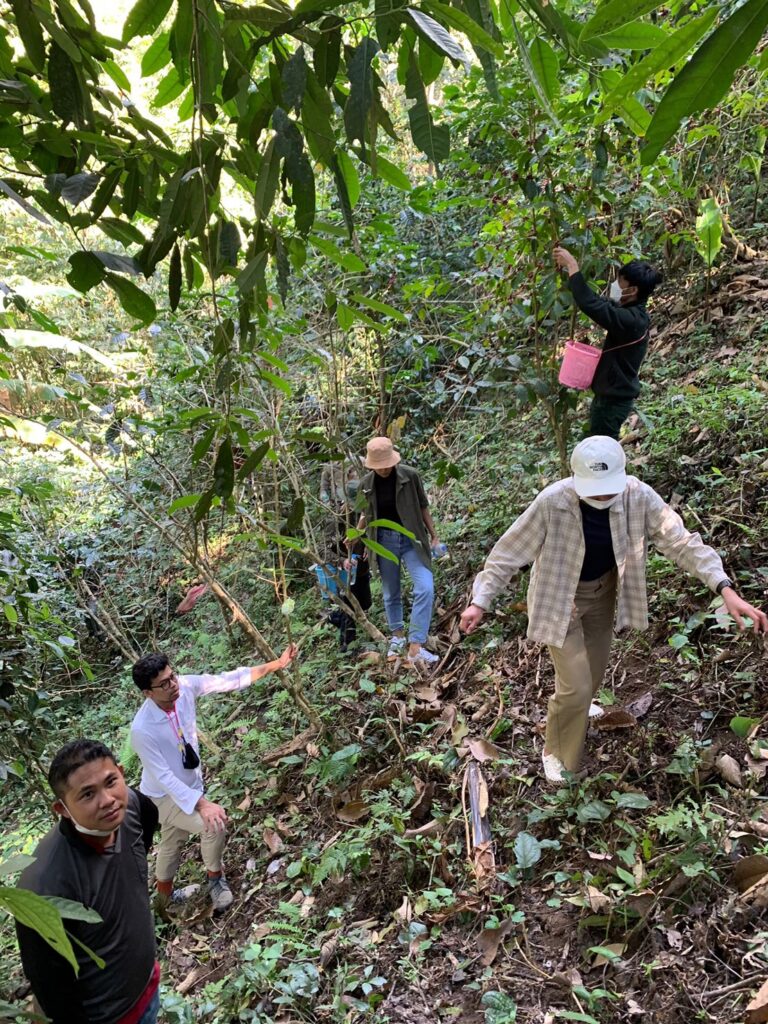
Instead, Nu saw a bunch of coffee plants growing along a large tree on extremely steep hills in real life. When the farmers harvest the coffee cherries, it must be challenging to climb, and they also have to make several rounds because it’s unlikely for all the coffee cherries to ripen at the same time.
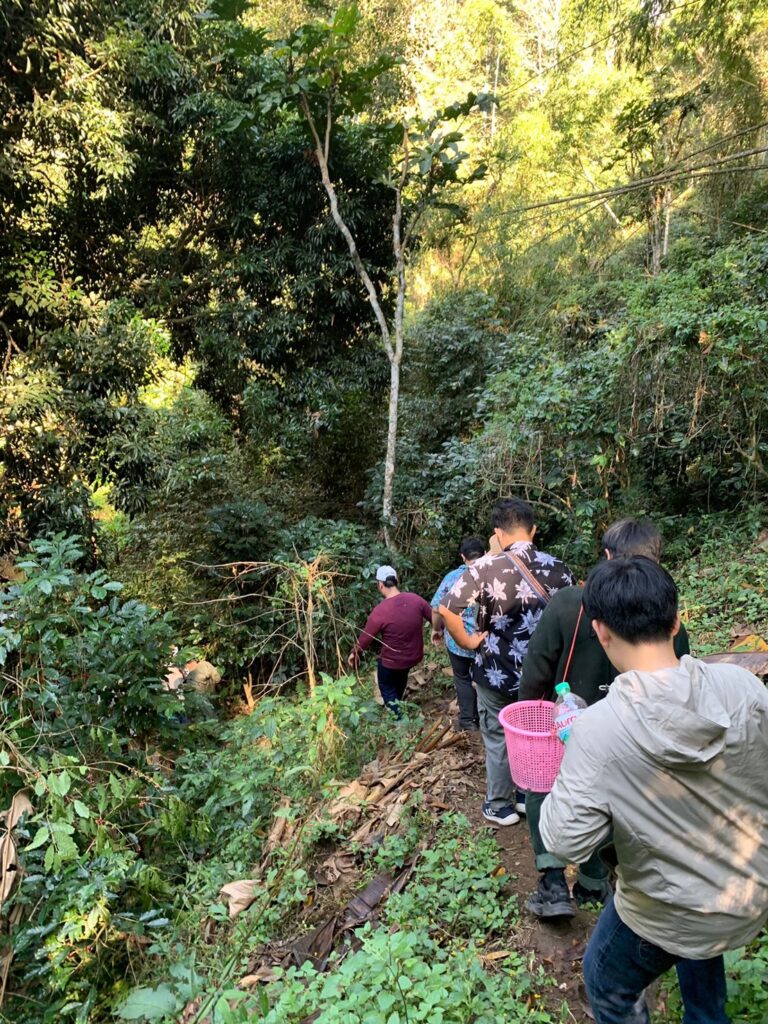
“Some sections were perched on a cliff, and to get up there is demanding and challenging. After visiting the plantation, I appreciate and value coffee so much more, and now I’ll always try my best to waste as little coffee as possible by making every shot come out perfectly,” Nu says.
“Because the plantations were so steep, we could only collect 5-6kg of coffee cherries in 2 hours, which is very little compared to local farmers who collect around 50-60kg per person. 6kg of coffee cherries can only make about 40 cups of coffee. After observing the challenges of harvesting the coffee cherries, we truly value the coffee and try our best not to waste it. P’ Nui and P’ Aoy jokingly told us that it’s okay to waste it so they can sell more,” Tae laughs.
The next destination is a large coffee processing plant in Pangkhon Village, Chiang Rai, who have worked with both Roots and Beanspire Coffee for a long time. According to Nu, you can observe practically every step of the coffee processing here, from sorting the coffee cherries to washing, roasting, and drying for each of the processes. In addition to that, the Melekul family who are the owners of the processing plant, kindly let our Baristas experience first-hand coffee processing as well.
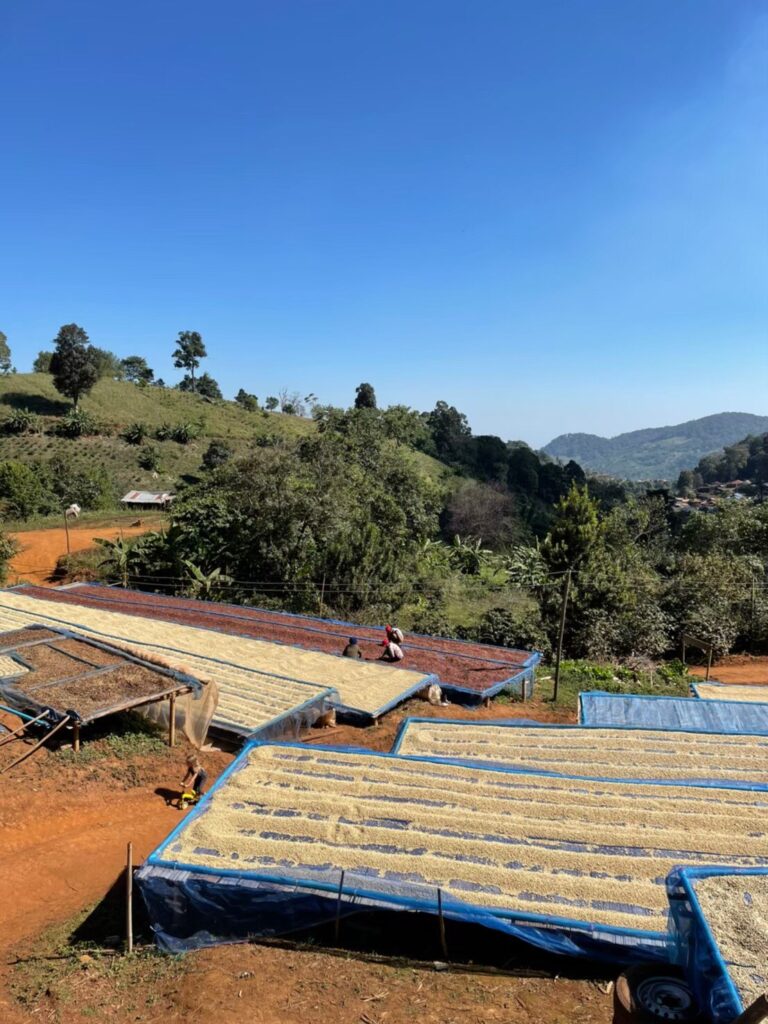
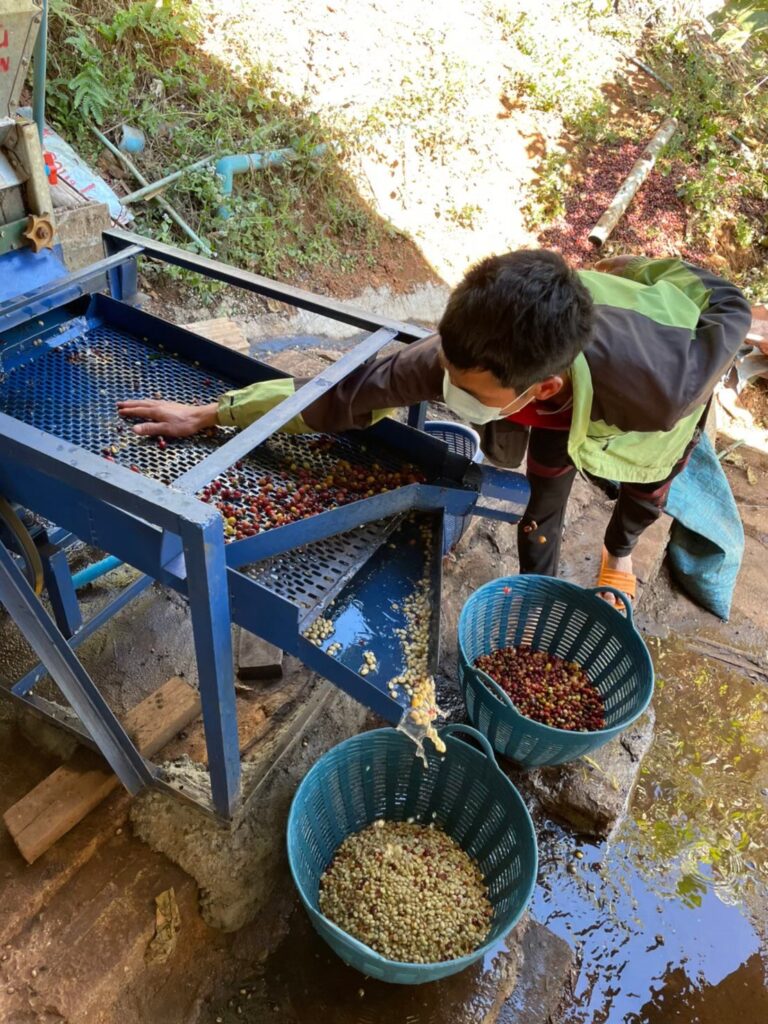
“The last plantation we went to was P’ Chatree’s. He showed us around the coffee farm and taught us how to properly store coffee because improper storage might influence the flowering and fruiting of subsequent batches. He also showed us how to evaluate various coffee varietals and how they differ from one another,” explains Nu.
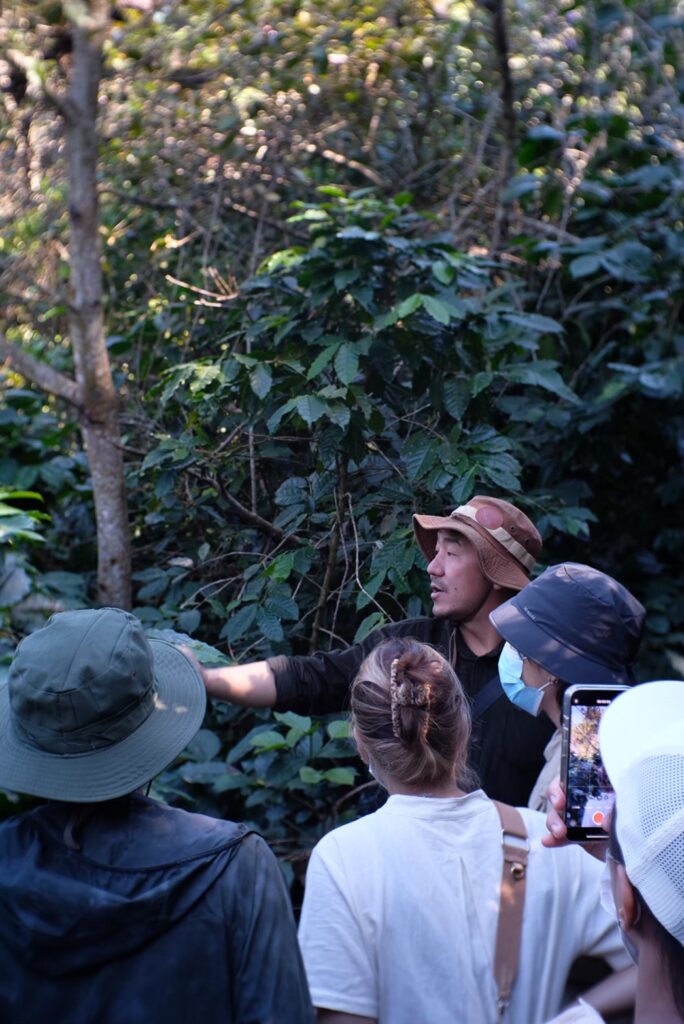
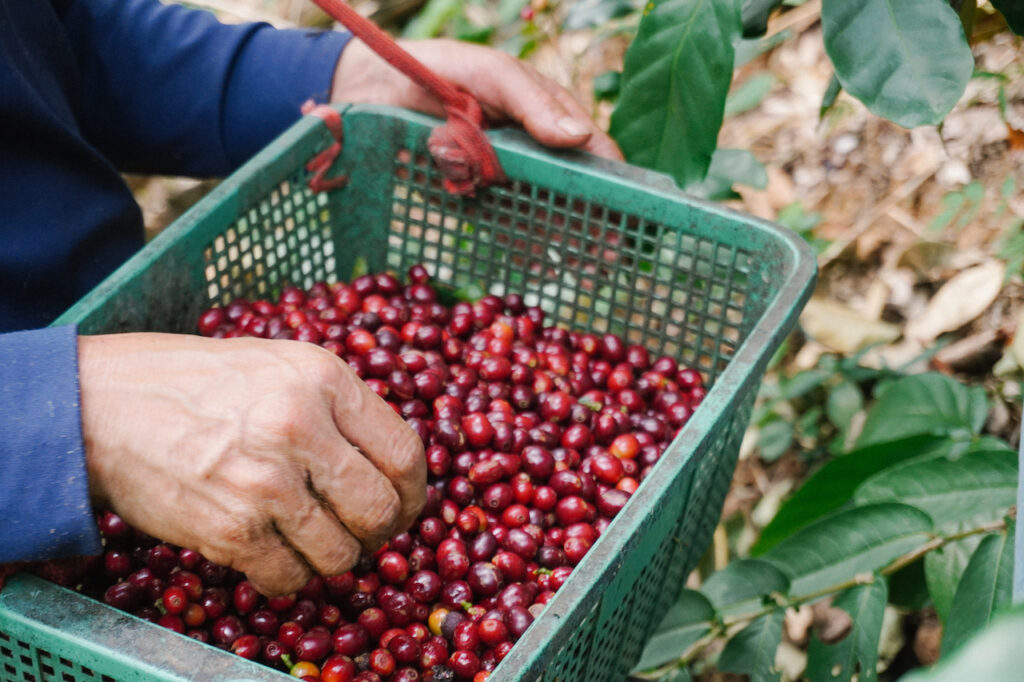
“I must say, I’m incredibly impressed with all the farmers we work with because I got to observe their passion and dedication for coffee. Whether it’s taking care of the plants, collecting the cherries, or processing, it makes us fall in love with coffee even more,” Nu said with a smile.
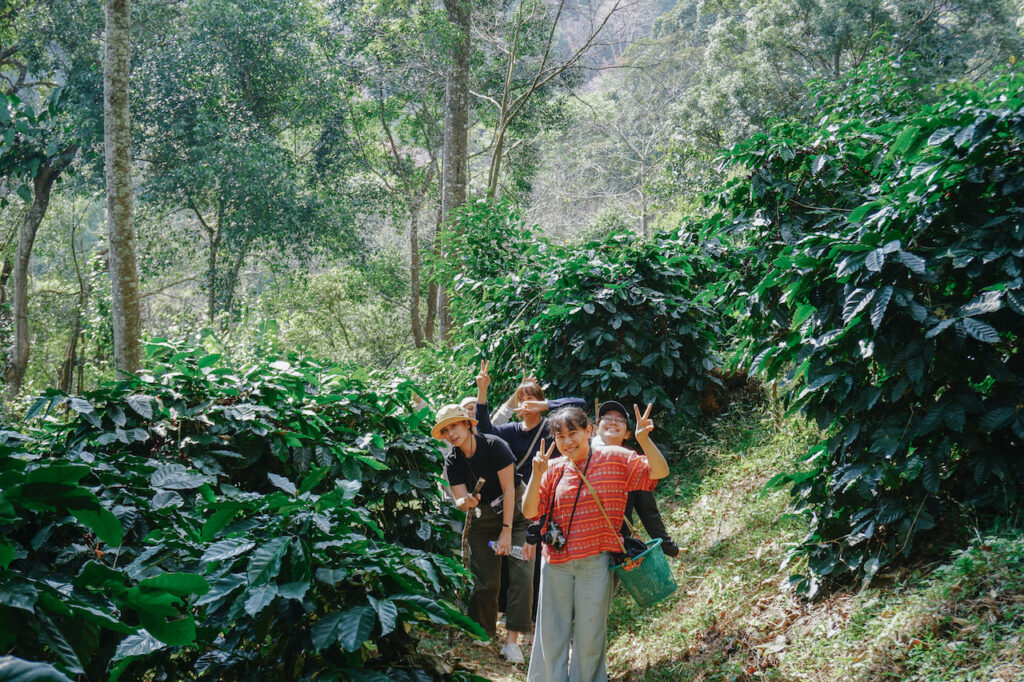
Tae tells us that there are always fun unplanned adventures that happen on every Origin Trip. For example, getting to know new farmers along the way or accidentally discovering a new processing method that creates delicious coffee. This is one of the many things that excites our Baristas as they enjoy themselves on the trip and look forward to next year’s trips.
“When I first began my coffee journey, I kept asking what specialty coffee was. Everyone would tell me that it was about paying meticulous attention to every step of the process, starting with planting the coffee trees. As Baristas, we focus on roasting and brewing, but when I observe the farmers’ involvement in every stage of the process and caring for it as if it were their child, it inspires me. “Caring for” might be an understatement,” Tae concluded.





